Ever wondered what lies inside the legendary Amityville Horror House? This article offers a rare look at the design, history, and mysterious reputation of one of America’s most infamous homes. Known for its role in paranormal lore, the Amityville Horror House has been transformed through thoughtful renovations, making it both a beautiful Dutch Colonial home and a cultural icon. From exploring eerie claims to uncovering stunning design details, this is the ultimate guide to the Amityville house as it stands today.
Amityville Horror House
- 📍 Location: 108 Ocean Avenue, Amityville, NY, USA
- 💰 Estimated Price: Last sold for approximately $605,000 in 2017
- 🏗️ Year Built/Remodel: Built in 1927, with significant remodels over the years, especially in the 2000s
- 🌳 Size of Land: 10,000 square feet
- 🏠 Size of House: 3,600 square feet
- 🛏️ Rooms: 5 bedrooms, 3.5 bathrooms
Table of Contents
- Amityville Horror House
- Brief Overview of the Amityville Horror House’s History
- The Interior of the Amityville Horror House
- Major Renovations and Design Updates
- Does the Amityville Horror House still exist?
- Where is the Amityville Horror House?
- Does anyone live in the Amityville Horror House?
- Is the Amityville Horror House for sale?
- Is the Amityville Horror House still haunted?
- Can you visit the Amityville Horror House?
- Conclusion
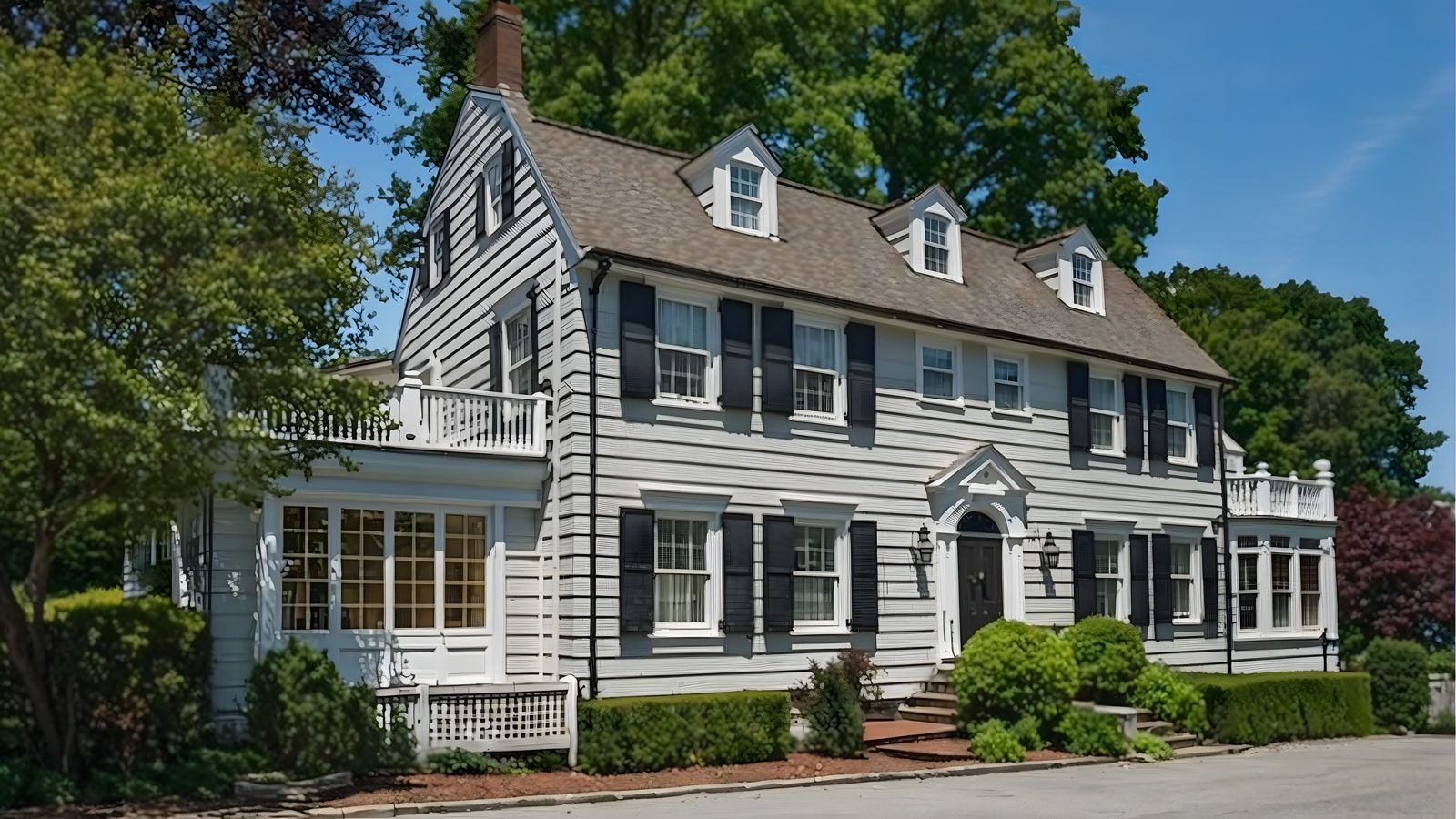
Brief Overview of the Amityville Horror House’s History
The Amityville Horror House is infamous in both pop culture and paranormal circles, and it all began with a tragedy in the quiet town of Amityville, New York. In 1974, this picturesque Dutch Colonial home became the site of a horrific crime. Ronald DeFeo Jr., a troubled young man, murdered his parents and four siblings as they slept, forever changing the character of the house. DeFeo would later claim that “voices” in his head drove him to commit these unspeakable acts—a detail that would fuel the paranormal legend around the property.
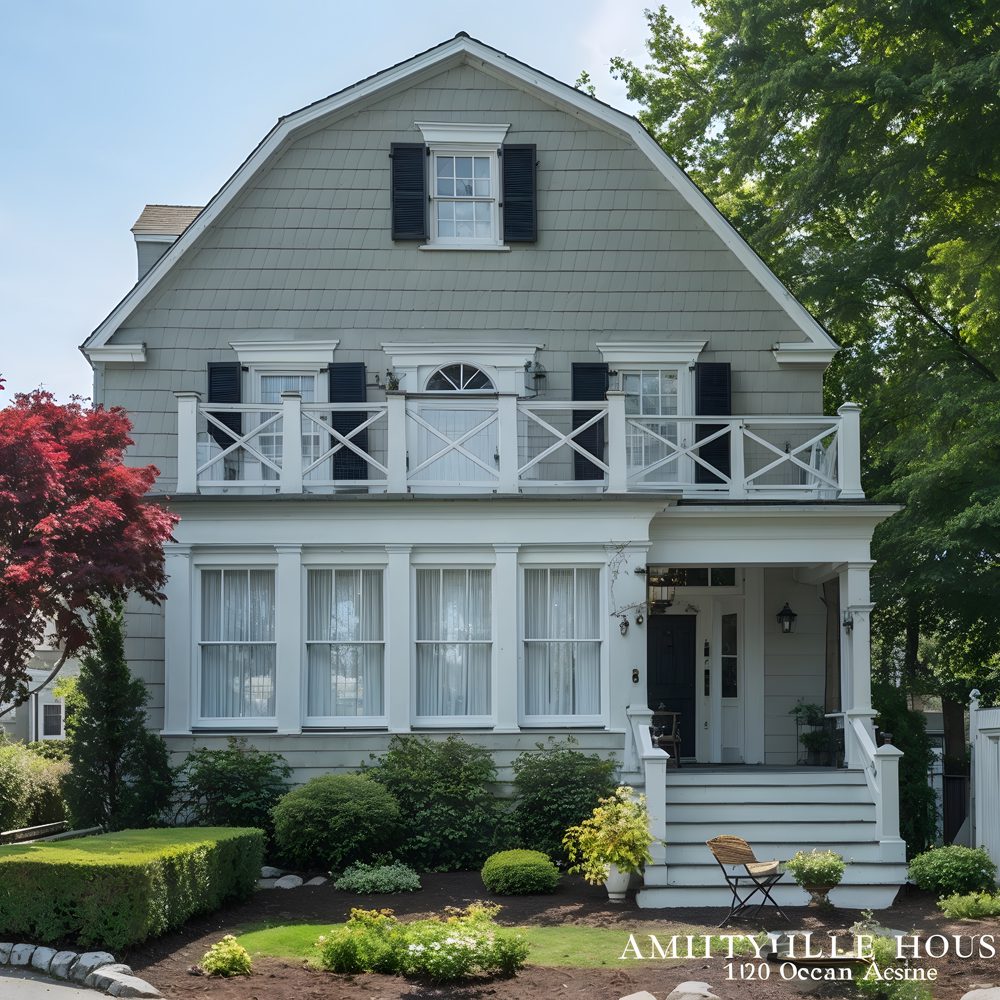
A little over a year after the DeFeo murders, the Lutz family moved in, buying the house at a bargain price. But they didn’t last long. Within 28 days, they fled, claiming they had experienced terrifying supernatural phenomena. From strange odors and “cold spots” to green slime oozing from walls, their reported experiences read like scenes from a horror movie—and they inspired one of the most famous ones, The Amityville Horror.
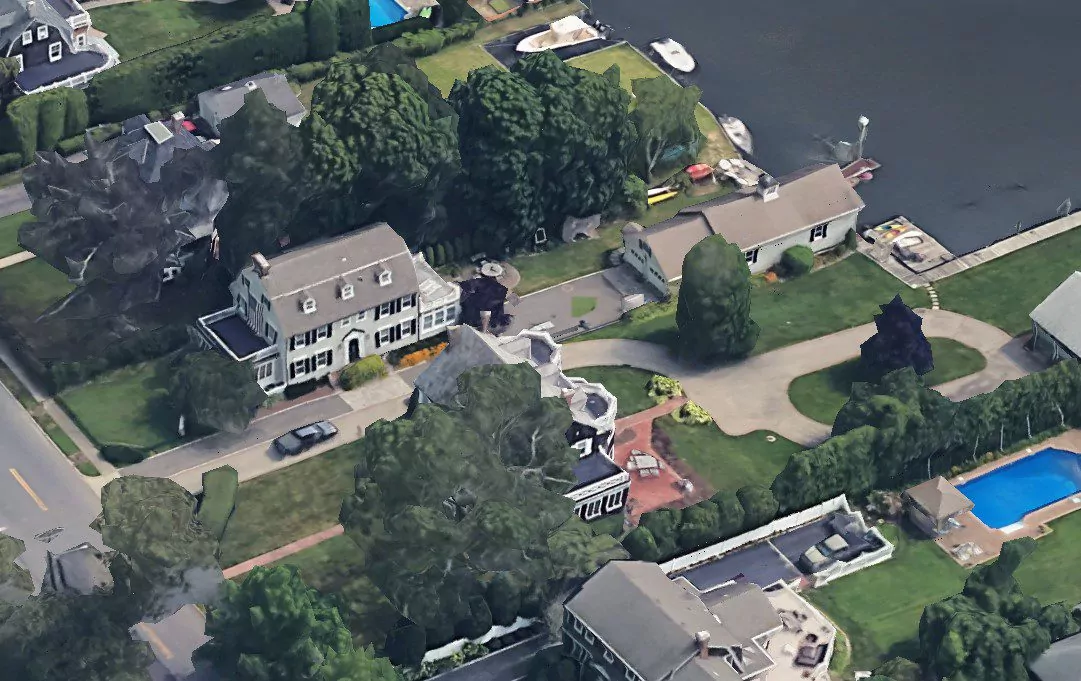
In fact, the Lutz family’s brief, haunting stay has contributed just as much to the house’s legendary status as the actual murders. It’s the classic blend of true crime and supernatural horror that has cemented this property’s place in American folklore. Today, people still wonder: was it real, or a hoax? As designers, we might not have answers, but we know that a home’s energy can be shaped by what we bring into it. That’s why understanding the past, in all its complexity, is essential to reimagining spaces for the present.
The Interior of the Amityville Horror House
The Amityville Horror House stands as a testament to the idea that design can both create and transform the spirit of a home. As we step through each room, the house’s architecture and decor show how thoughtful design choices can emphasize beauty, comfort, and nostalgia, softening the edges of an infamous history. Let’s walk through each space and explore how the current interior design contributes to the home’s renewed ambiance.
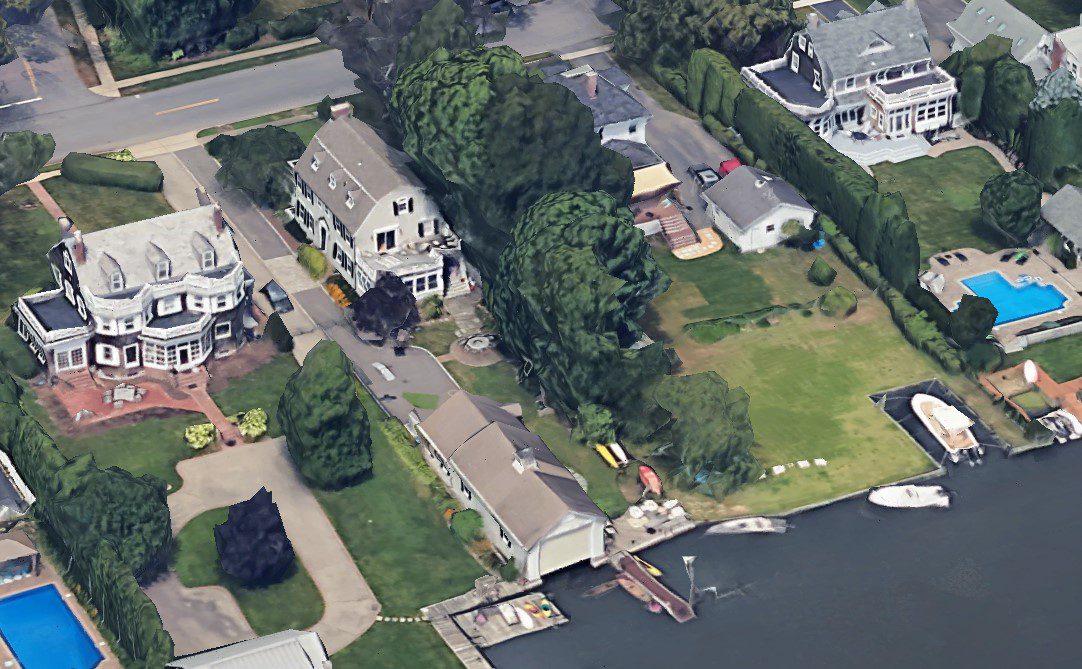
The Amityville Horror House features classic Dutch Colonial architecture, a style known for its distinct gambrel roof, which lends the house a charming, cottage-like appeal. With light gray siding and white trim, the home exudes a quiet elegance, contrasting its legendary notoriety. The facade is balanced with dormer windows on the upper floor, framed with black shutters that add depth and contrast to the soft color palette.

A welcoming front porch sits at the entrance, with white railings and sturdy pillars that soften the overall look, making the house seem approachable. This aesthetic is further enhanced by the manicured landscaping around the property: a mix of lush shrubbery, mature trees, and well-maintained flower beds. The combination of these features creates a peaceful, storybook-like setting—one that almost dares visitors to question its eerie reputation. An outdoor seating area nestled among the greenery invites relaxation, hinting at the current owners’ focus on creating a serene environment.
Garage and Boathouse
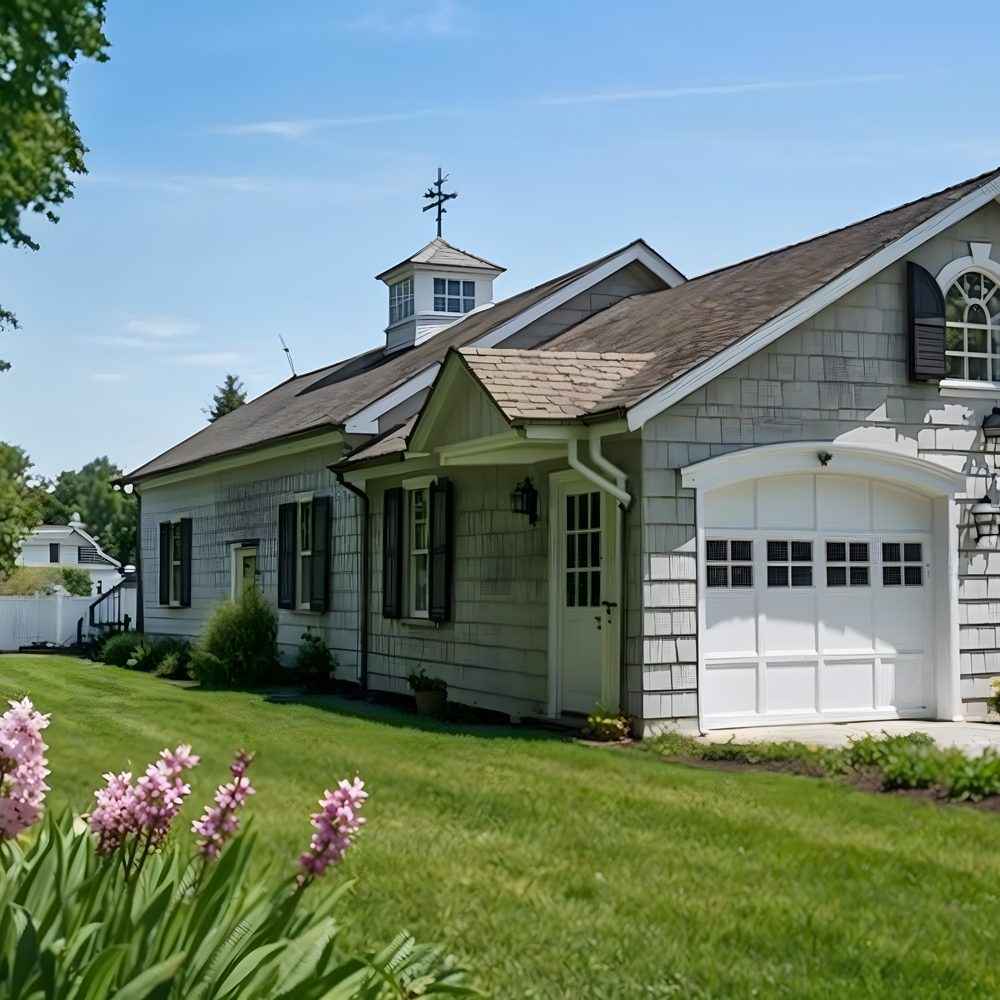
Beyond the main house, the two-car garage adds a touch of symmetry to the property, with its own dormer window echoing the design of the main house. It’s practical and tasteful, blending seamlessly with the landscape.
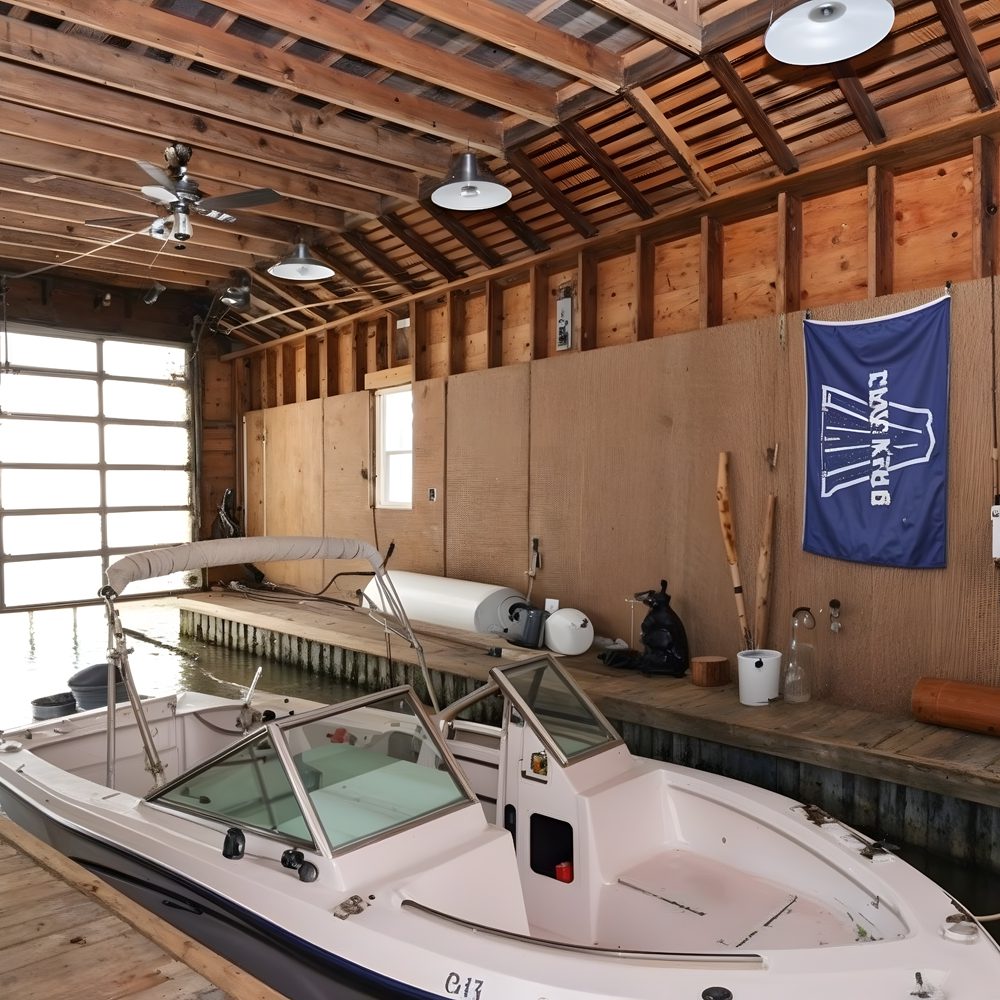
Nearby, a boathouse along the canal offers a unique charm, serving as both a functional space and an aesthetic element that ties the home to its waterside location. Inside the boathouse, the rustic wooden beams and fishing equipment give it a laid-back, recreational feel. It’s clear that today’s owners have focused on creating a home that emphasizes peace, comfort, and utility—all while honoring the home’s traditional design elements.
Living Room
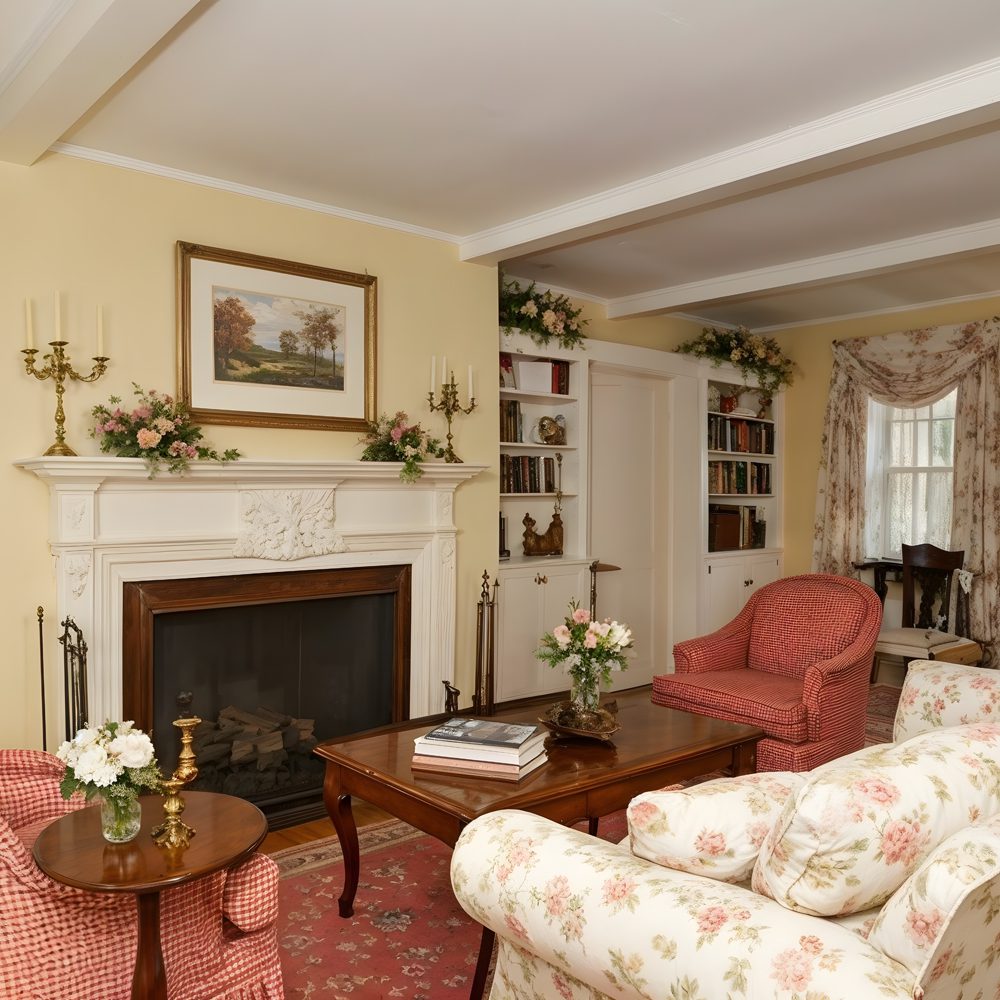
The living room is a cozy, inviting space where every detail seems chosen to foster warmth. With soft yellow walls, the room feels cheerful yet sophisticated. The floral-patterned sofa and upholstered armchairs add an element of vintage charm, perfectly complementing the classic white fireplace that anchors the room. Above the fireplace, a carefully selected painting and tasteful decor accentuate a sense of calm and tradition.
Dining Room
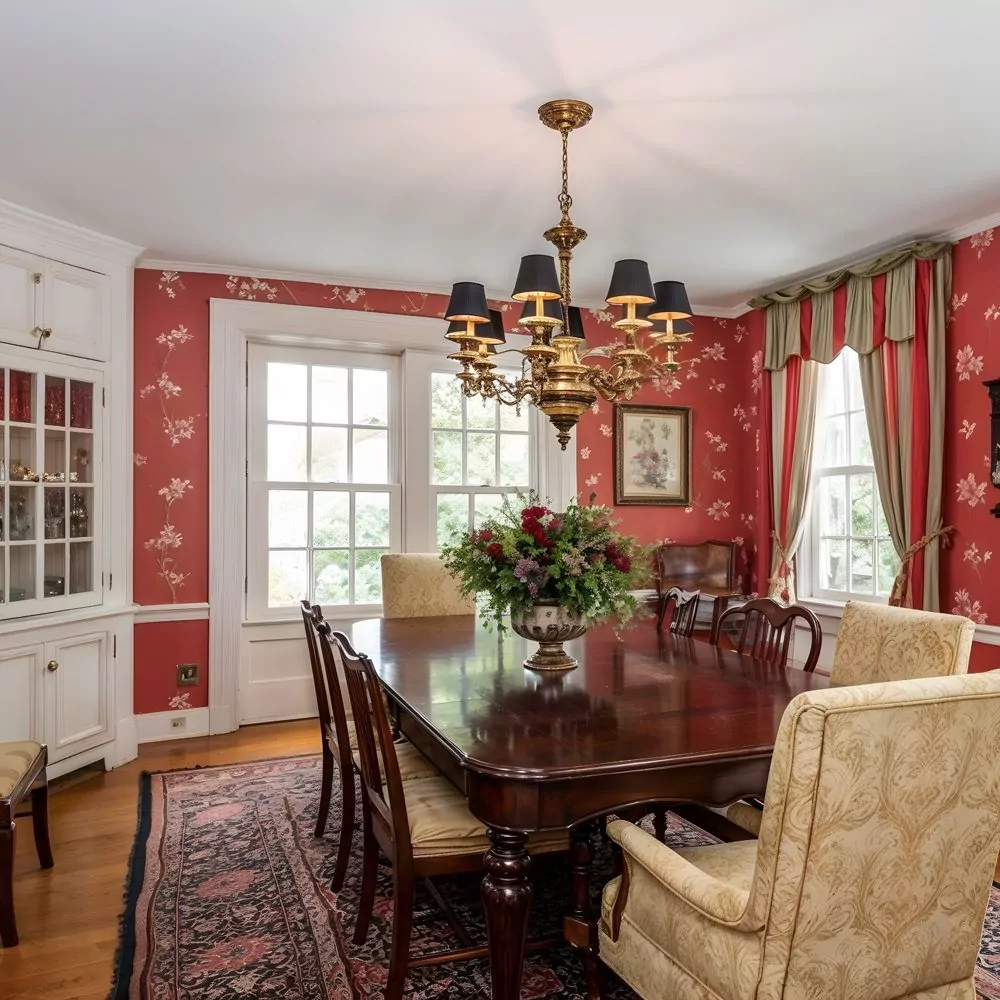
The dining room is a stunning ode to classic New England design with its rich red and white wallpaper featuring small floral motifs. A large, polished wooden dining table sits at the center, surrounded by high-backed chairs that hint at formal gatherings and long, comfortable dinners. Overhead, a sophisticated chandelier with black shades and brass finishes casts a soft glow, perfect for evening meals.
Sunroom

The sunroom is the brightest and most open space in the house, with large windows on three sides that offer views of the garden and the canal. The walls and ceiling are painted in white beadboard, reflecting light and creating an airy, coastal feel. The decor is relaxed and understated, featuring neutral wicker furniture with botanical-patterned cushions that mirror the surrounding greenery.
Primary Bedroom
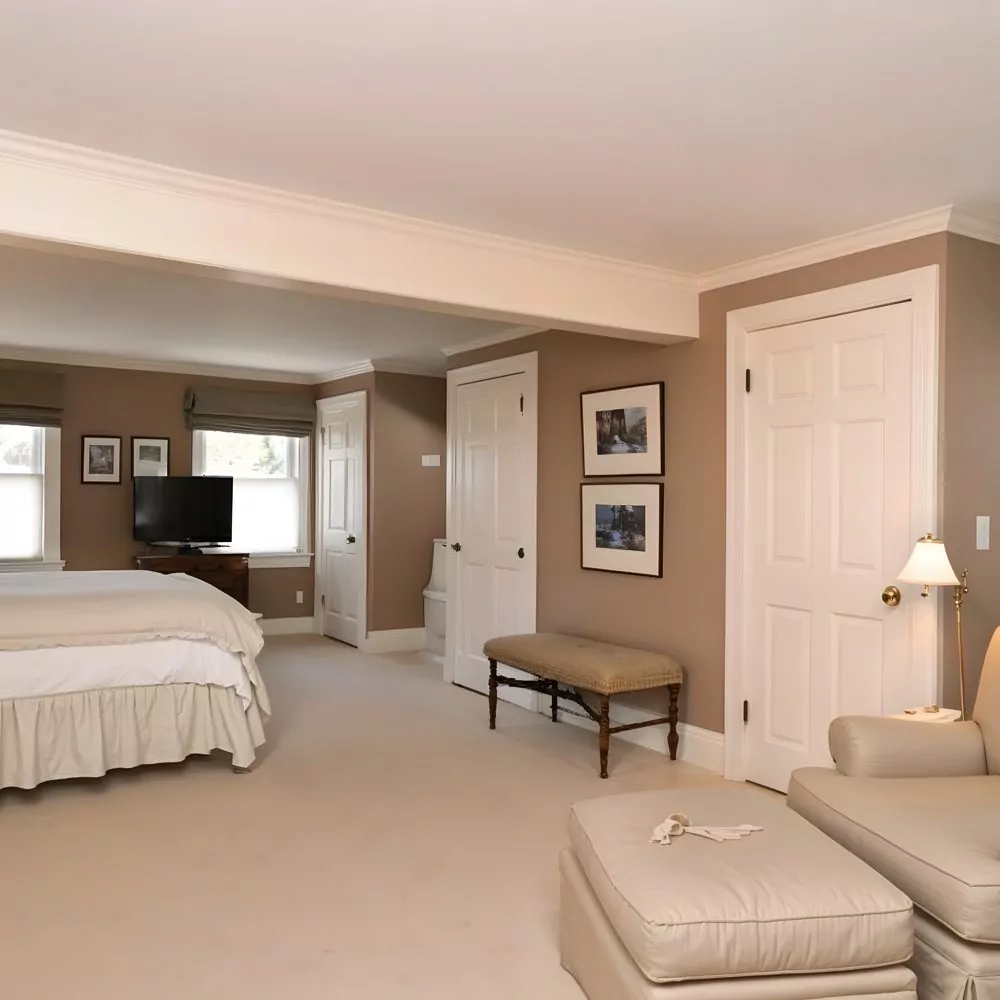
In the primary bedroom, a soft, muted color palette of beige walls and light carpeting creates a soothing environment. The room is spacious and uncluttered, with a king-sized bed featuring a white duvet that adds a layer of simplicity and calm. A cozy sitting area with an armchair and ottoman sits in one corner, offering a personal retreat within the room—ideal for reading or quiet reflection.
Kitchen

The kitchen in the Amityville Horror House embraces a warm, rustic charm, balancing functionality with nostalgic touches. Brick-patterned flooring introduces a rustic texture, grounding the space with its earthy tones. The white cabinetry and green countertops create a lively contrast, infusing the room with character. Above the windows, a floral wallpaper border adds a touch of vintage flair, tying in with the home’s overall aesthetic.
Major Renovations and Design Updates
One of the most notable renovations came in the 2000s, when owners removed the iconic quarter-moon windows that gave the house its sinister, “face-like” appearance. This change was intended to discourage unwanted attention and reduce the house’s symbolic link to horror, marking a shift toward a more anonymous, welcoming facade.
| Year | Owner | Key Changes and Renovations | Purpose/Effect |
|---|---|---|---|
| 1975 | Lutz Family | No major changes; reported paranormal events | Gave rise to the haunted house reputation |
| 1987-1997 | Private Owners (anonymous) | Minor interior updates, no hauntings reported | Established it as a regular family home |
| 2000s | New Owners | Removed quarter-moon windows, updated landscaping | Aimed to reduce public attention |
| 2017 | Current Owners | Enhanced security, improved interiors for privacy | Emphasized private residency and comfort |
Inside, the home has seen a variety of updates, including new cabinetry and flooring that bring the property into the 21st century. While elements of the original design remain, these modern touches add freshness and subtly redefine the house’s character, making it feel like a comfortable home rather than a set piece from a horror story.
Does the Amityville Horror House still exist?
Yes, the Amityville Horror House still exists at its current address, 108 Ocean Avenue, Amityville, New York. Originally, it was numbered 112, but the address was changed to reduce tourist visits and unwanted attention. Despite its haunted reputation, the house has gone through several renovations over the years, including the removal of its famous “eye windows,” making it appear more like a standard Dutch Colonial home. The property remains privately owned and occupied, with no new paranormal reports from recent residents.
Where is the Amityville Horror House?
The Amityville Horror House is located at 108 Ocean Avenue in Amityville, New York. This iconic Dutch Colonial home gained notoriety after a series of tragic events in 1974, followed by paranormal claims from subsequent residents. The house remains a point of interest for its blend of architectural charm and infamous history.
Does anyone live in the Amityville Horror House?
Yes, the Amityville Horror House does currently have residents who live in it. The house, which gained its haunting reputation after the tragic 1974 DeFeo family murders and the subsequent paranormal claims by the Lutz family, has continued to attract interest due to its eerie history. However, current owners have maintained it as a private residence and worked to minimize unwanted attention. They even modified the iconic facade to downplay the property’s haunted associations, though the house remains a subject of cultural fascination and paranormal lore.
Is the Amityville Horror House for sale?
As of the latest information, the Amityville Horror House is not currently on the market. The property last sold in 2017 for approximately $605,000. Located at 108 Ocean Avenue, Amityville, New York, this house remains a private residence despite its notoriety from the paranormal claims of previous owners and its role as inspiration for the Amityville Horror book and films.
Is the Amityville Horror House still haunted?
The Amityville Horror House is generally believed not to be haunted today, at least by current residents. Paranormal reports stem primarily from the Lutz family, who lived there briefly in the mid-1970s and claimed intense hauntings, including green slime, disturbing sounds, and apparitions. However, several families who have lived in the house since then, including the Cromarty family and recent occupants, have reported no supernatural events.
Can you visit the Amityville Horror House?
The Amityville Horror House is privately owned, and as such, it isn’t open to the public for tours or visits. Located at 108 Ocean Avenue in Amityville, New York, the house has had its address and appearance modified over the years to discourage unwanted attention. Although fans of paranormal lore and horror films often visit the street for photos, visitors are expected to respect the privacy of the residents and view the property only from public sidewalks without approaching the house or entering the yard.
Conclusion
The journey of the Amityville Horror House from a tragic crime scene to a legendary haunted home and finally to a peaceful residence is both complex and fascinating. Each chapter in its history, from the horrific DeFeo murders to the Lutz family’s paranormal claims and subsequent media frenzy, has added layers to its narrative. Today, the house stands as a symbol of transformation, both architectural and cultural, illustrating how thoughtful design and intentional privacy can reshape even the most infamous spaces.

